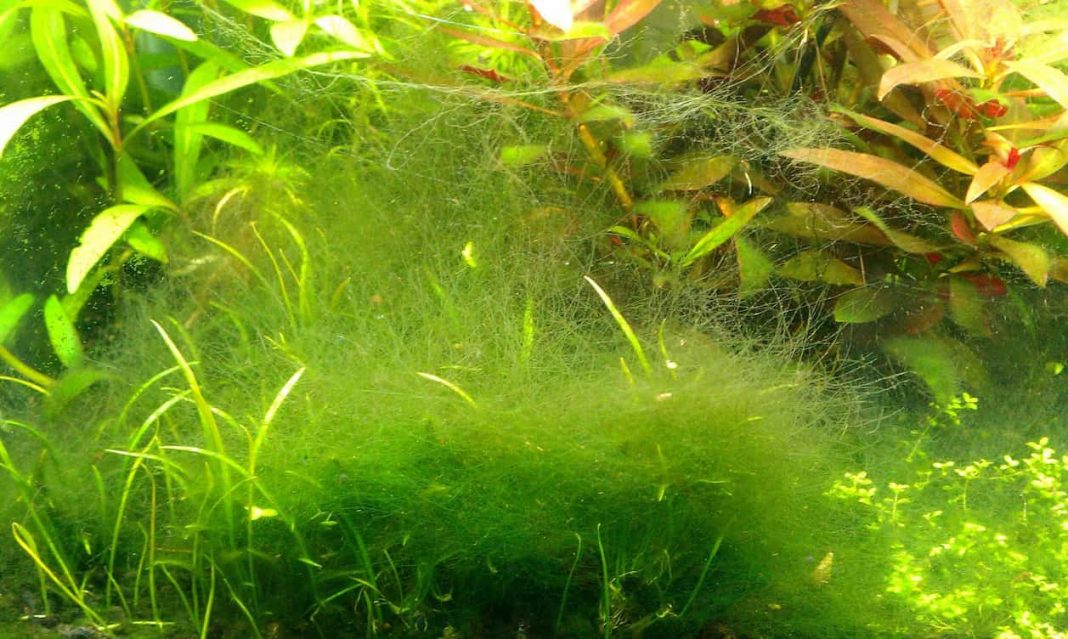If you’ve owned an aquarium for any amount of time, you’ll of had some kind of algae make your tank look grubby. Although algae is normal and not normally dangerous, it is important to try to keep control of its growth.
Quicklinks:
Algae and how it grows
Photosynthetic eukaryotes is the scientific term used for algae. Algae can be compared to a plant, in that algae can’t simply form and start growing from nothing. Algae forms from various basic nutrients in your aquarium. These nutrients could be compared to fertilizer for algae growth.
If an aquarium’s environment becomes too rich in these nutrients, then algae growth can get out of control, and within a short period of time infest your whole tank.
As aquariums need a reasonable amount of nutrients and high levels of lighting, this will lead to further algae growth.
Ammonia, a nitrate that could be seen as a fertilizer for algae. Nitrate is a healthy component required by plants. Keeping a low concentration of nitrate in your aquarium is important to keep the growth of algae at a minimum.
Types of aquarium algae
If you see algae in your aquarium, you first need to identify the types of algae that you’re dealing with before trying to remove it.
Here we will have a quick look at the most common types of aquarium algae.
Brown algae – Can be also be commonly referred to as silica algae, can typically be a usance to newly set up fish tanks. Brown algae can be identified as a layer that will quickly cover your tank.
Although brown algae is generally harmless, it can quickly become out of control, becoming a problem for aquarium plants, gradually smothering them, leading to your plants dying.
Green water algae – Can also be referred to as algae bloom, is an algae that can leave your tank looking awful. This algae suspends in the water rather than growing from the surfaces of the tank. The direct factors that lead to green water algae aren’t very well understood.
Spot algae – Can also be referred to as green algae. This algae could be considered as healthy algae and is something that most tanks will encounter at some point.
Black beard algae – This is a stubborn algae that can be found growing on ends of plant leaves, and on the edges of other surfaces.
Black beard algae, due to its name has the appearance of a dense green-like beard, which is composed of fine strands. It is very soft and slippery to touch, rapidly growing algae, and is difficult to remove by hand.
Smear algae – This can be referred to as slime algae will have the appearance of goo or slimy sheets, with the color being green to blue.
Smear algae will pretty much cover anything it can, which could be a result of poor water quality. This algae can potentially harm your plants by gradually smothering them.
This algae can be controlled via blackening or cutting the lights of your tank for longer periods.
Common causes of algae
The introduction of algae into an aquarium can come from simple things, i.e., water being added from a pet shop, aquarium lighting being left on too long, too much direct sunlight, or leftover fish food.
Conclusion
When algae is introduced into your tank, it is impossible to completely remove it. The only practical solution for any aquarium owner is to try and maintain your tank, cleaning up uneaten food, with regular water changes.
